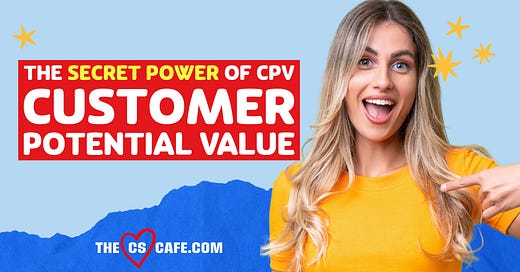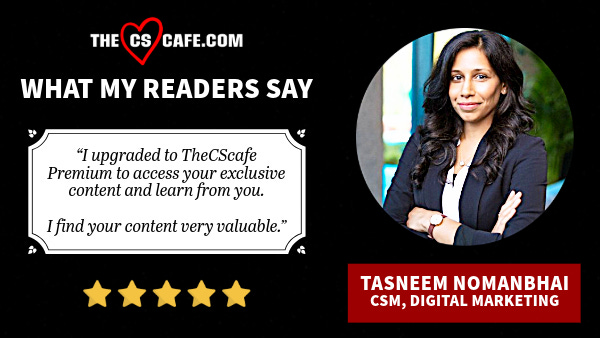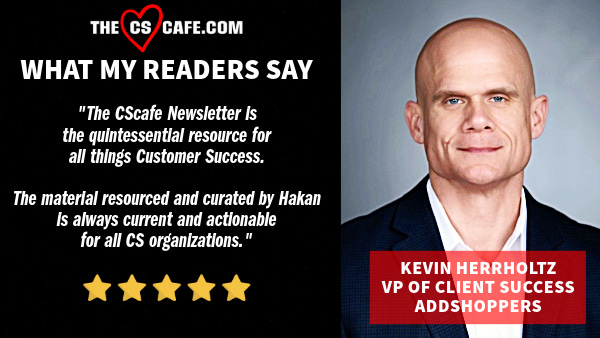Ever felt like you could get more out of your customer relationships?
For this, you have to figure out how much business potential your customers have.
In particular, for those who are not using all their products yet.
And this is a major roadblock to growth.
You need to see the full picture of what your customers could be worth.
Or else, your upselling efforts might fall flat.
And the result?
You might be leaving money on the table, not being sure if you're making the most from your customers.
But there's a way to measure and discover this potential.
It's called Customer Potential Value (CPV).
And it's all about using data to make smarter decisions.
This approach can completely transform the way you handle customer success.
It can turn your educated guesses into solid strategies and open up new ways to grow.
Here’s how:
The Power of Customer Potential Value (CPV)
Customer Potential Value (CPV) goes beyond the traditional Customer Lifetime Value (CLV) metric.
CLV focuses on the current value a customer brings.
CPV estimates the potential value if the customer uses your solutions in full.
Here's why CPV matters:
Identifies upsell opportunities
Understand the full potential value so you can introduce more products or services.
Guides resource allocation
Focus your resources on customers with the highest potential.
Informs product development
Insights into potential value can guide enhancements or new features.
Improves customer segmentation
Better segmentation allows for more targeted and effective marketing and support efforts.
For more on the importance of customer potential, check out my Customer Relationship Revival guide.
Calculating Customer Potential Value
To estimate CPV, consider these key factors:
Current product usage and spending
Analyze how much the customer is currently spending and using your products.
Industry benchmarks
Use industry standards to gauge potential spending.
Company size and growth trajectory
Larger and fast-growing companies often have higher potential.
Budget allocation for similar solutions
Understand how much they might be willing to invest in your type of solution.
Competitive landscape
Consider what competitors are offering and at what price points.
And use a combination of internal data, third-party data enrichment, and predictive analytics.
This will help you create a powerful CPV model.
For more insights on using data in an effective way, read my guide on Top SaaS Metrics and KPIs.
4 Easy Steps To Implement a CPV Strategy Based On Data
1. Data Collection and Enrichment
Use your CRM, product usage data, and financial information
Gather as much internal data as possible.
Develop with third-party data sources (for example Clearbit, ZoomInfo)
Supplement your data with external sources to fill in the gaps.
For more on leveraging data, read my article on Boosting Your Data Analysis with Rows AI.
2. Segmentation Analysis
Group customers by industry, company size, or other relevant factors
This helps identify patterns and benchmarks within segments.
Identify patterns and benchmarks within segments
Use these insights to adapt your approach.
See how segmentation can improve your strategies in my Ultimate Guide To Scale Customer Success.
3. …
And there you have it!
—a quick preview of Customer Potential Value (CPV) fundamentals.
And if you would like to explore in detail, here's what I'm covering in Part 2 (exclusive to my Premium subscribers):
Real-world case studies of CPV implementation
Challenges in implementing CPV strategies and how to overcome them
Advanced AI and machine learning techniques for CPV modeling
Ethical considerations in using customer data for CPV analysis
Detailed KPIs for measuring the success of your CPV strategies
Want to develop your knowledge and skills to boost your career?
Upgrade now to access these additional insights and take your CPV strategy to the next level!
“I upgraded to The CS Café Premium to access your exclusive content and learn from you. I find your content very valuable” - Tasneem Nomanbhai, Customer Success Manager, Digital Marketing
“The CS Café Newsletter is the quintessential resource for all things Customer Success. The material resourced and curated by Hakan is always current and actionable for all CS organizations.” - Kevin Herrholtz, VP of Client Success, AddShoppers
Part 2/2: For Premium Subscribers Only
…





